Papers: Difference between revisions
No edit summary |
No edit summary Tag: Reverted |
||
| Line 2: | Line 2: | ||
{{#ask: | {{#ask: | ||
[[Category:Paper]] | [[Category:Paper]] | ||
|sort=Has date published | |sort=Has date published | ||
|order=descending | |order=descending | ||
Revision as of 00:47, March 4, 2024
| Semiconductor Workforce and Talent Assessment | ||
| The report provides an overview of Oregon’s semiconductor industry and workforce. | ||
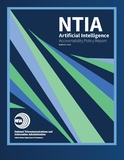
|
Artificial Intelligence Accountability Policy Report | |
| Artificial intelligence (AI) systems are rapidly becoming part of the fabric of everyday American life. From customer service to image generation to manufacturing, AI systems are everywhere.
Alongside their transformative potential for good, AI systems also pose risks of harm. These risks include inaccurate or false outputs; unlawful discriminatory algorithmic decision making; destruction of jobs and the dignity of work; and compromised privacy, safety, and security. Given their influence and ubiquity, these systems must be subject to security and operational mechanisms that mitigate risk and warrant stakeholder trust that they will not cause harm. | ||
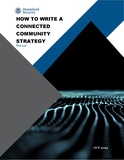
|
DHS Guidebook on How to Write a Connected Community Strategy | |
| The U.S. Department of Homeland Security (DHS) has partnered with representatives from New York (NY), San Jose (CA), Memphis (TN), Chattanooga (TN), and Colorado State University to develop this "how to" guide to help community leaders build a digital transformation strategy. Contributors include chief information officers, chief information security officers, chief privacy officers, economists, technology experts, cyber policy professionals, risk analysts, and former municipal executives, each with unique experience driving community digital transformations. This foundational guide is the first in a series of guides that DHS hopes will help communities achieve their connected community goals. | ||
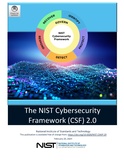
|
NIST Cybersecurity Framework 2.0 | |
| The National Institute of Standards and Technology (NIST) has updated the widely used Cybersecurity Framework (CSF), its landmark guidance document for reducing cybersecurity risk. The new 2.0 edition is designed for all audiences, industry sectors and organization types, from the smallest schools and nonprofits to the largest agencies and corporations — regardless of their degree of cybersecurity sophistication. | ||
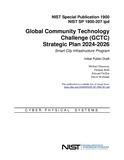
|
Global Community Technology Challenge (GCTC) Strategic Plan 2024-2026 | |
| This publication provides a Strategic Plan for the Smart City Infrastructure (SCI) program of the Communications Technology Laboratory at the National Institute for Standards and Technology (NIST), the research laboratory of the U.S. Department of Commerce. The SCI program manages the Global Community Technology Challenge (GCTC), a nationwide public-private partnership of cities and communities; local and state government agencies; and private-sector for-profit and non-profit entities.
This strategy is based on a consensus planning process chartered by the NIST SCI program in collaboration with the leadership of twelve GCTC technology sectors (i.e., working groups), who collectively represent over 220 regions, cities and communities that have initiated smart city programs or projects as GCTC member communities. | ||
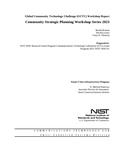
|
Global Community Technology Challenge (GCTC) Workshop Report | |
| The goal of the workshop series was to generate a community-focused perspective aligned with
and in support of the federally led NIST Smart City Infrastructure program. The specific objective of the meetings was to solicit GCTC leadership input to articulate vision and mission statements as well as to identify forward looking goals and activities for the volunteer organization to inform a community-based strategy for the GCTC, as well as smart and connected communities across the nation. | ||
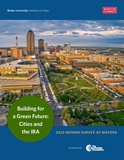
|
Building for a Green Future: Cities and the IRA | |
| Passed in 2022, the Inflation Reduction Act (IRA) features unprecedented federal investment in environmental initiatives. It provides around $370 billion in resources for clean energy technology. These investments come primarily in the form of tax credits and grants available to state and local governments, nonprofits, and individual households.
For example, the Solar for All program “provide[s] up to 60 grants to States, Tribal governments, municipalities, and nonprofits to expand the number of low-income and disadvantaged communities that are primed for residential and community solar investment — enabling millions of families to access affordable, resilient, and clean solar energy.” Despite these massive investments, the Biden Administration has expressed growing concerns and frustration about the slow pace with which federal dollars are translating into concrete projects. | ||
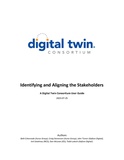
|
Digital Twin Stakeholders | |
| This paper has been written and developed in support of Decarbonizing the Built World: A Call to Action, an owner or occupier-led implementation of digital twin-related capabilities required to support the decarbonization of new and existing buildings.
It specifically addresses the role of the stakeholder in this process. The order of stakeholder engagement is a function of when key decision makers identify goals relating to the improvement of building performance. | ||
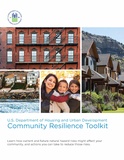
|
HUD-Community-Resilient-Toolkit.pdf | |
| The U.S. Department of Housing and Urban Development (HUD) Resilience Toolkit (Toolkit) is designed to assist communities in enhancing their resilience to climate-related natural hazard risks. Although not the focus of this toolkit, consideration of other hazards, risks, and stresses may also enhance resilience. | ||
| [[File:|200px|x160px|link=[[Media:]]]] | Cloud vs. Edge AI | |
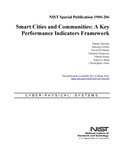
|
Smart Cities: A Key Performance Indicators Framework | |
| This publication presents research findings and scientific work that advance the development and progression of smart city and community measurement methodology. The term 'smart,' as used in the phrase 'smart cities,' is defined here as the efficient use of digital technologies to provide prioritized services and benefits to meet community goals. | ||
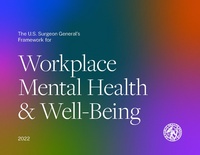
|
Workplace Mental Health & Well-Being | |
| This Framework is dedicated to all workers who lost their lives during the pandemic and to their families. May this serve as a call to action to lift up the voices of workers, particularly those most vulnerable, and to protect their health and well-being. | ||
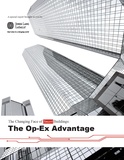
|
The Changing Face of Smart Buildings | |
| This marquee project received considerable attention because it was an integrated energy retrofit of a significant building, according to Dan Probst, who heads JLL’s technical operations. Less visible, says Probst, were the many smart building components installed in the iconic structure. | ||
| [[File:|200px|x160px|link=[[Media:]]]] | Smart city reporting | |
| [[File:|200px|x160px|link=[[Media:]]]] | Regenerative living cities and the urban climate–biodiversity–wellbeing nexus | |
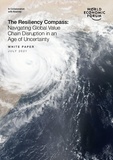
|
The Resiliency Compass | |
| Next generation operations and supply chain leaders will be defined by their ability to withstand and quickly adapt to increasingly disruptive headwinds. | ||
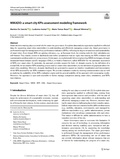
|
Smart city KPIs assessment | |
| [[File:|200px|x160px|link=[[Media:]]]] | A novelist’s vision of the virtual world has inspired an industry | |
| [[File:|200px|x160px|link=[[Media:]]]] | RCSTSS 2016 | |
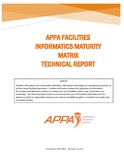
|
APPA Facilities Informatics Maturity Matrix Technical Report | |
| Facilities Informatics is the intersection offacilities, information technology and management practices to achieve betterfacilities/operations. Facilities Informatics involves the application of information technology to facilitate the creation and subsequent use of facilities related data, information and knowledge. This Technical Report helps to characterize the nature of Facilities Informatics and the process on which an organization improves and matures its ability to gather, understand and apply data in decision making. | ||
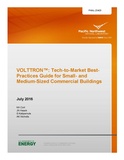
|
VOLTTRON | |
| VOLTTRON™ is an open-source distributed control and sensing platform developed by Pacific Northwest National Laboratory for the U.S. Department of Energy. It was developed to be used by the Office of Energy Efficiency and Renewable Energy to support transactive controls research and deployment activities. | ||
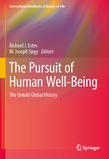
|
Pursuit of Human Well-Being | |
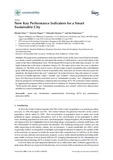
|
New Key Performance Indicators | |
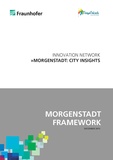
|
Morgenstadt Framework | |
| The "Morgenstadt Framework" is an early version of what is to become the Fraunhofer Morgenstadt approach to analyse cities upon their sustainability performance. The full version will be published as my PhD in 2016. | ||
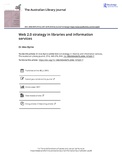
|
Web 2.0 strategies in libraries and information services | |